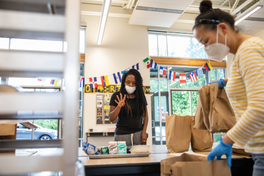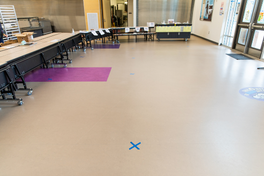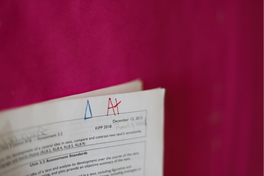Dear Friends,
1,800. It felt so good to be “back on track” with 1,800 educators at the Carnegie Foundation Summit on Improvement in Education last month in San Diego. For nearly 14 years, Carnegie has promoted the use of improvement science methods to address some of the most persistent problems in our nation’s schools. This year’s conference was particularly special.
After a two-year hiatus, we joined together with new friends and old to compare notes about the pandemic’s challenges and our collective work ahead. In a keynote address, U.S. Secretary of Education Cardona described continuous improvement as an essential feature of rebuilding our schools. Poster boards and presentations described efforts to use data, research, and continuous improvement on topics such as keeping students engaged, increasing attendance, and supporting off-track eighth and ninth grade students with the academic and emotional support they need to thrive. Learn more about these and other stories here.
But the conference also confirmed one other important fact. Since Tony Bryk and his colleagues first wrote Learning to Improve, thousands of teachers have embraced improvement science as a form of user-centered design – a way of starting with students’ experiences to optimize classroom instruction, academic interventions, and strategies to improve students’ social and emotional development in ways that are equitable and responsive to students’ needs. In fact, under the leadership of new President Tim Knowles, Carnegie is now considering new initiatives to accelerate policy to transform the improvement ecosystem, such as eliminating the time-based credit (aka the “Carnegie Unit”) that can impede efforts to improve, rethink, and transform education in multiple ways. These are exciting times as we spread emerging lessons learned to more educators across the country.
At the foundation, we remain committed to ensuring that continuous improvement remains accessible and vibrant. Over the next year, we will be reaching out to hear directly from you to better understand how we can help make improvement an enduring part of the K-12 landscape. We look forward to working with you, grantees and non-grantees alike, to evolve and expand these critical lessons learned – and the tools and policies that can accelerate them – both to address the multiple challenges in the short term and in larger transformation of the system over time. Thanks for letting us learn and improve with you.
In partnership,
Bob Hughes
@BobHughesK12
Quick Takes
-

More Than a Million Students Never Showed Up to School Last Year
Nearly half (48 percent) of public elementary and secondary school teachers nationwide had at least one student who was registered but never showed up for class during the 2020-21 school year, according to a teacher survey conducted by the General Accounting Office (GAO). Of these teachers, 72 percent said this was more than in a typical year. Based on these data, the GAO estimates that at least 1.1 million students were unaccounted for in the 2020-21 school year. High school teachers faced the biggest problems, with about two-thirds of those educators reporting that they had at least one student unaccounted for last year. -

Dispelling the Myths: What Research Says About Teacher Professional Learning
A new brief from the Research Partnership for Professional Learning identifies commonly held beliefs about professional learning that are not supported by research findings. The study identified shared understandings of what does and does not work in professional learning that were based on an earlier generation of research. For example, one pervasive myth is that improving teachers’ content knowledge is key to improving their instructional practice. The truth is that professional learning programs that aim directly at instructional practices are more likely to shift student learning than programs with a focus on content knowledge. -

Nearly Half of Public Schools Have Teaching Vacancies
New data from the National Center for Education Statistics show that 44 percent of public schools reported having at least one teaching vacancy as of January 2022. Special education was identified as the teaching position with the most vacancies, with 45 percent of schools reporting this vacancy. General elementary and substitute teachers were reported as vacant by 31 percent and 20 percent of schools, respectively. For public schools who reported having either a teaching or staff vacancy, over 50 percent were due to resignation. Additionally, to cover staffing vacancies, over half of these schools reported the increased need to use school staff outside of their intended duties. -

State-By-State Results from Annual Assessments Administered During Pandemic Now Available
The Collaborative for Student Success has added new information updating the AssessmentHQ.org website. The online platform features an interactive map allowing viewers to see in one place state assessment data from across the United States that reflects testing during the 2020-2021 school year. The site displays proficiency rates as well as how transparent the state is in reporting its participation rates. The scores are an important benchmark that, when combined with other tools, will help families and policymakers better understand the impact of disruptions stemming from the COVID-19 pandemic.
